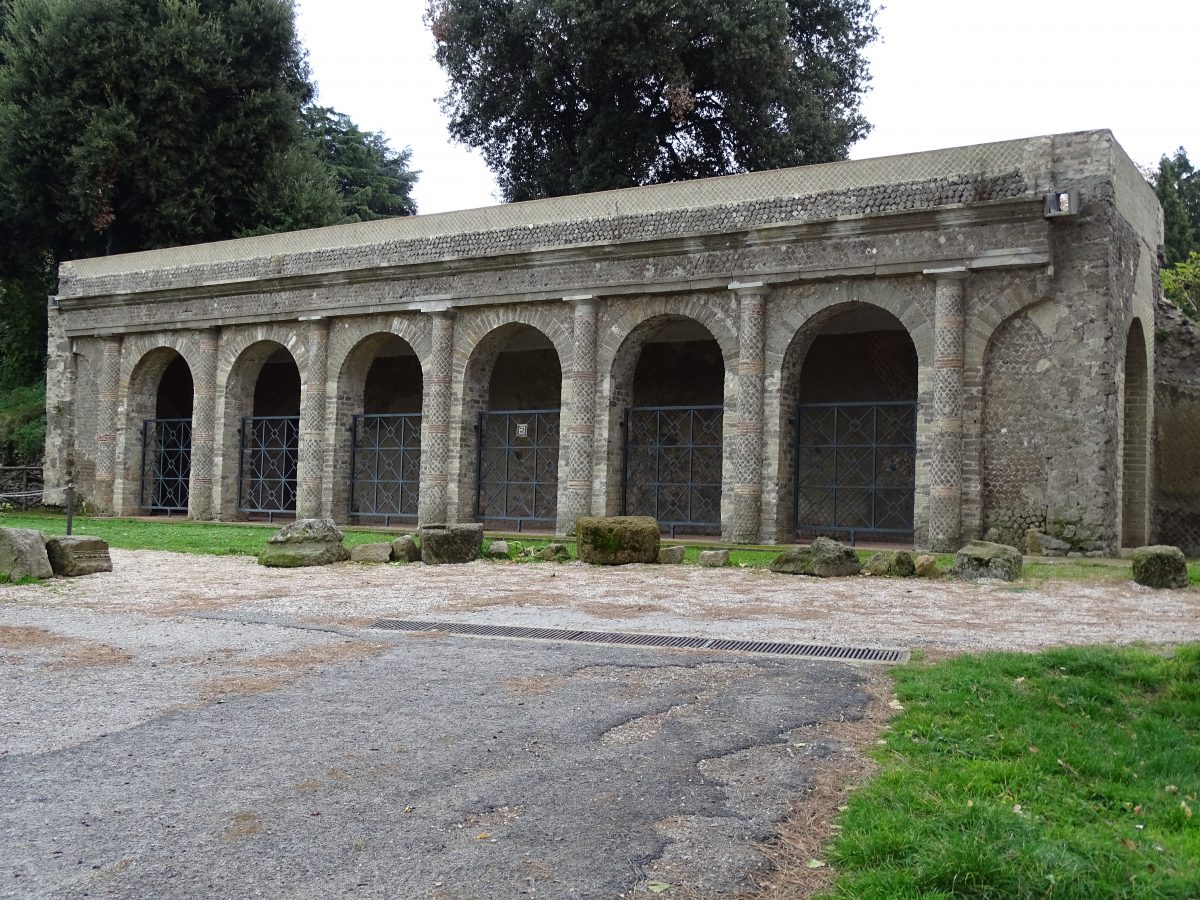The construction started at the end of the 7th century BC, and is marked by three periods. The first construction phase goes from the 7th to the 6th century BC, the second from the 6th to the 4th century BC, and the third from the 4th to the 3rd century BC, in mid-Republican period.
The most impressive architectural feature is the portico, divided into arcades with Doric-style pilaster strips, which leads to the cave where the sacred snake of Juno lived. According to the ritual of that time, in early Spring, focaccia bread was offered to the snake by young ladies and from its approval the harvest was predicted.
On the opposite side of the portico, you can see the remains of a peperino pillar built in opus quadratum, which most likely belonged to the entrance arch leading to the acropolis. During excavations, carried out between the end of the 19th century and the beginning of the 20th, several remains were found near this pillar, including a group of marble statues of Roman soldiers on horseback wearing the lorica (typical Roman armour), which is actually conserved at the British Museum in London.


 Visit Castelli Romani
Visit Castelli Romani 

